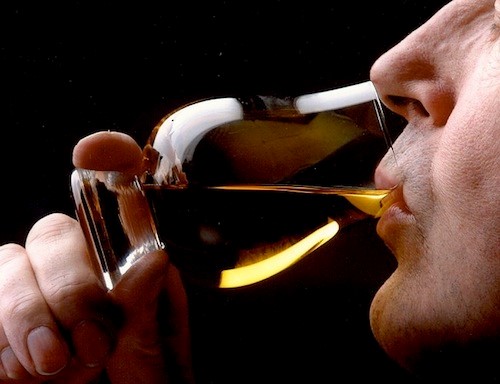Whisky, whisky, whisky. When it comes to finding out your favoured one, it can be a somewhat tricky process. Have no fear though, we’re here to help.
To get started, you’re going to need to familiarise yourself with a few key steps often used to discover the character of a particular whisky. The following pointers act as an ideal beginners’ guide that you can refer to throughout your journey exploring new whiskies.
In order to help you remember and compare the different whiskies, it’s a good idea to take notes — these are very important. You should take note of any bottling details, i.e. when it was distilled, when it was bottled, who bottled it and at what strength it was bottled.
But above all else, remember it’s all fun, right?
First Step
To begin with you’re going to need whisky, obviously. There’s no better way to start your knowledge and journey with different whiskies than exploring the drams on taste at The Midlands Whisky Festival and shopping through Nickolls and Perks.
 Remember to grab yourself a glass — unless you’re a caveman, we’re presuming you aren’t? There are a number of types of nosing glasses used for spirits; it’s all down to your personal preference. A descent tasting glass is great for capturing the important congeners (aromas) through nosing the whisky, whilst swirling it around the glass before taking a good ol’ slurp.
Remember to grab yourself a glass — unless you’re a caveman, we’re presuming you aren’t? There are a number of types of nosing glasses used for spirits; it’s all down to your personal preference. A descent tasting glass is great for capturing the important congeners (aromas) through nosing the whisky, whilst swirling it around the glass before taking a good ol’ slurp.
This may sound ludicrous, but the shape of the glass has a profound impact on nosing whisky — the better the design, the more characteristics you are going to receive on the nose. It’s not much good in using a big tumbler to try and catch much on the nose – the congeners are going to escape and vanish from the glass, leaving you with a rather dull experience.
Nosing Whisky
Your nose is one of the most important components when it comes to tasting whisky — it creates your first impression, luring you in.  To start with, give the glass a good swirl; this will release the aromas from the whisky. Then, place the glass to your nose and begin to smell the whisky, some may be more of a surprise than others, you can judge this beforehand by looking at the ABV on the bottle.
To start with, give the glass a good swirl; this will release the aromas from the whisky. Then, place the glass to your nose and begin to smell the whisky, some may be more of a surprise than others, you can judge this beforehand by looking at the ABV on the bottle.
Remember, when nosing the whisky, try to challenge yourself to associate the particular aroma you’re sensing with the gaggle of scents you’ve made a mental note of over the years. Try and be as open as possible; think foods, woods, nuts, sweets, barbeques, raisins, smoke, leather, and so on and so forth. Individuality is key. Everyone picks up different notes, no one is wrong in their opinion.
The Palate
Without a doubt tasting what you’ve just poured is the best part of it all, especially after teasing yourself with what it may taste like. Now, you may relate the flavours on the palate to those aromas you received previously on the nose.  Have a think of what it feels like in the mouth; is it soft and delicate? Harsh and upfront? Or dry and somewhat bland? In addition, you can also tell the length of the whisky with your palate, or, better put, how well balanced it is. Some questions you need to think about are: how long do these flavours last in the mouth? Is it all one flavour or do different flavours appear throughout? Do some flavours overpower others?
Have a think of what it feels like in the mouth; is it soft and delicate? Harsh and upfront? Or dry and somewhat bland? In addition, you can also tell the length of the whisky with your palate, or, better put, how well balanced it is. Some questions you need to think about are: how long do these flavours last in the mouth? Is it all one flavour or do different flavours appear throughout? Do some flavours overpower others?
After answering these questions, you should be able to bring together a conclusion regarding the whiskey. Hint! If it’s long lasting and complex with flavour, you can safely say that’s a damn good whisky.
Use Of Water
Adding water to your drink is entirely up to you, merely a preference thing. It can however assist the flavours, making them more apparent. Water will open up the whisky somewhat, but don’t add a great deal, just a drop or two will suffice. Doing such enables you to gain a greater understanding of the whisky, revealing its character in more depth.
That’s it! Now that you have an idea of how to taste whisky, you’re adequately equipped to go out there and explore the world of fine drams. Remember not to take it all too seriously, though. A definite recommendation is to share your opinions with fellow whisky enthusiasts, it’ll help improve your knowledge, and soon you’ll be tasting like a pro!
Jerome Gardener
